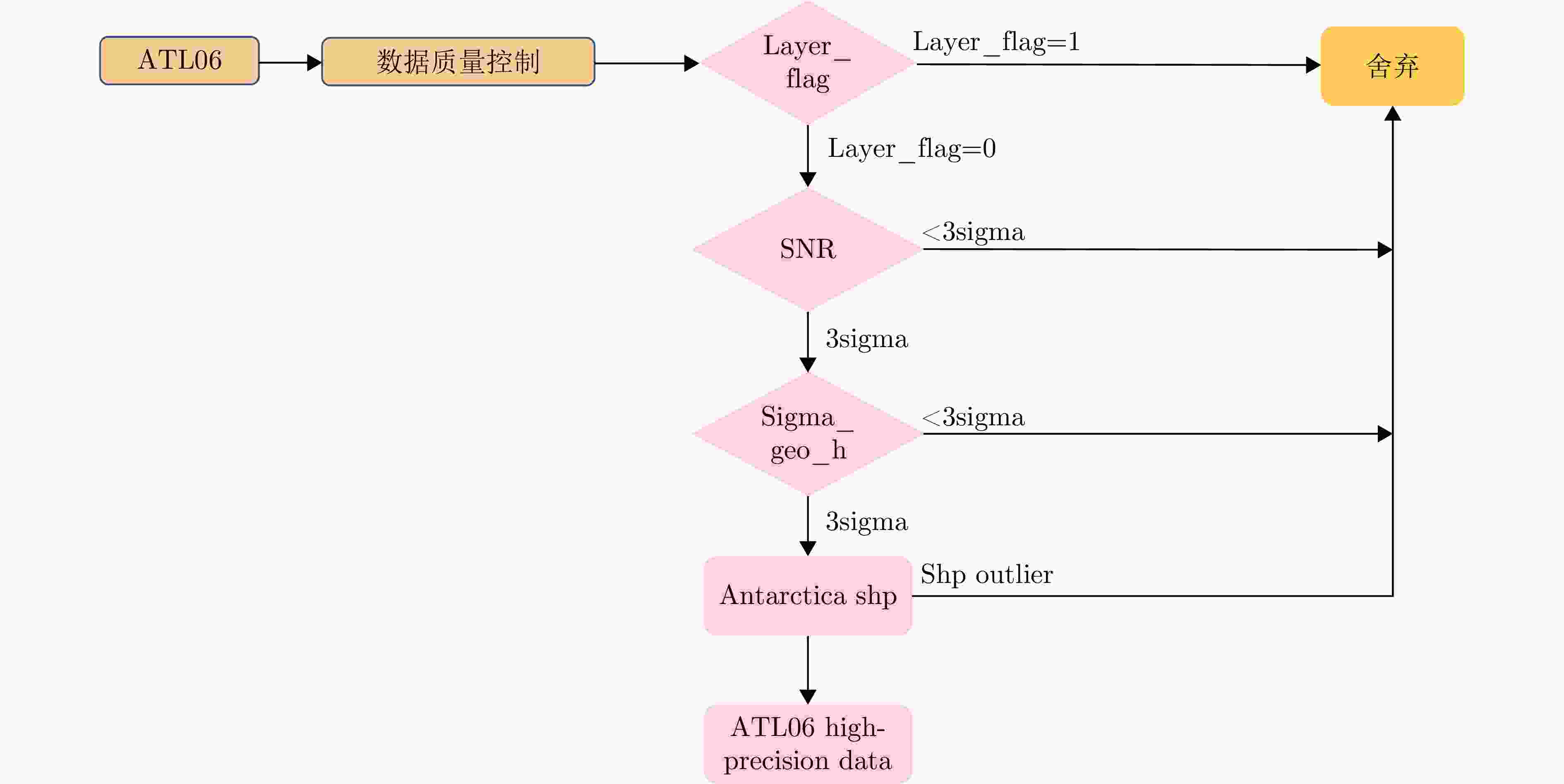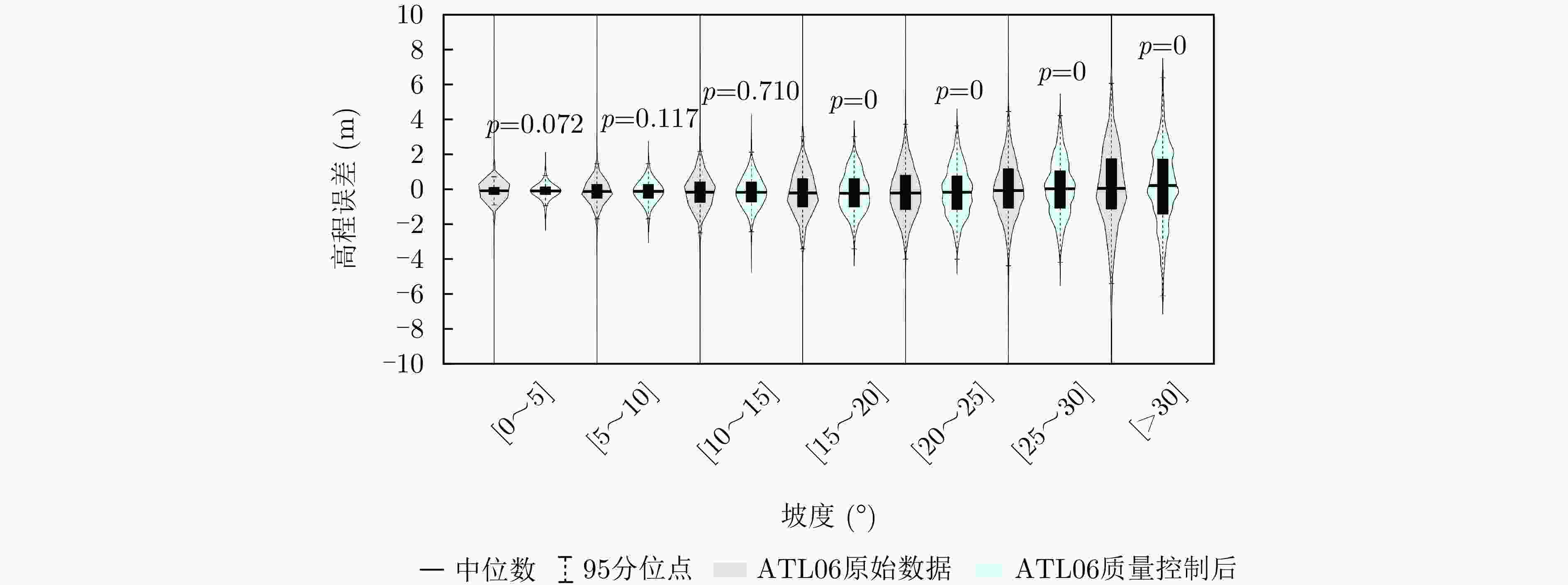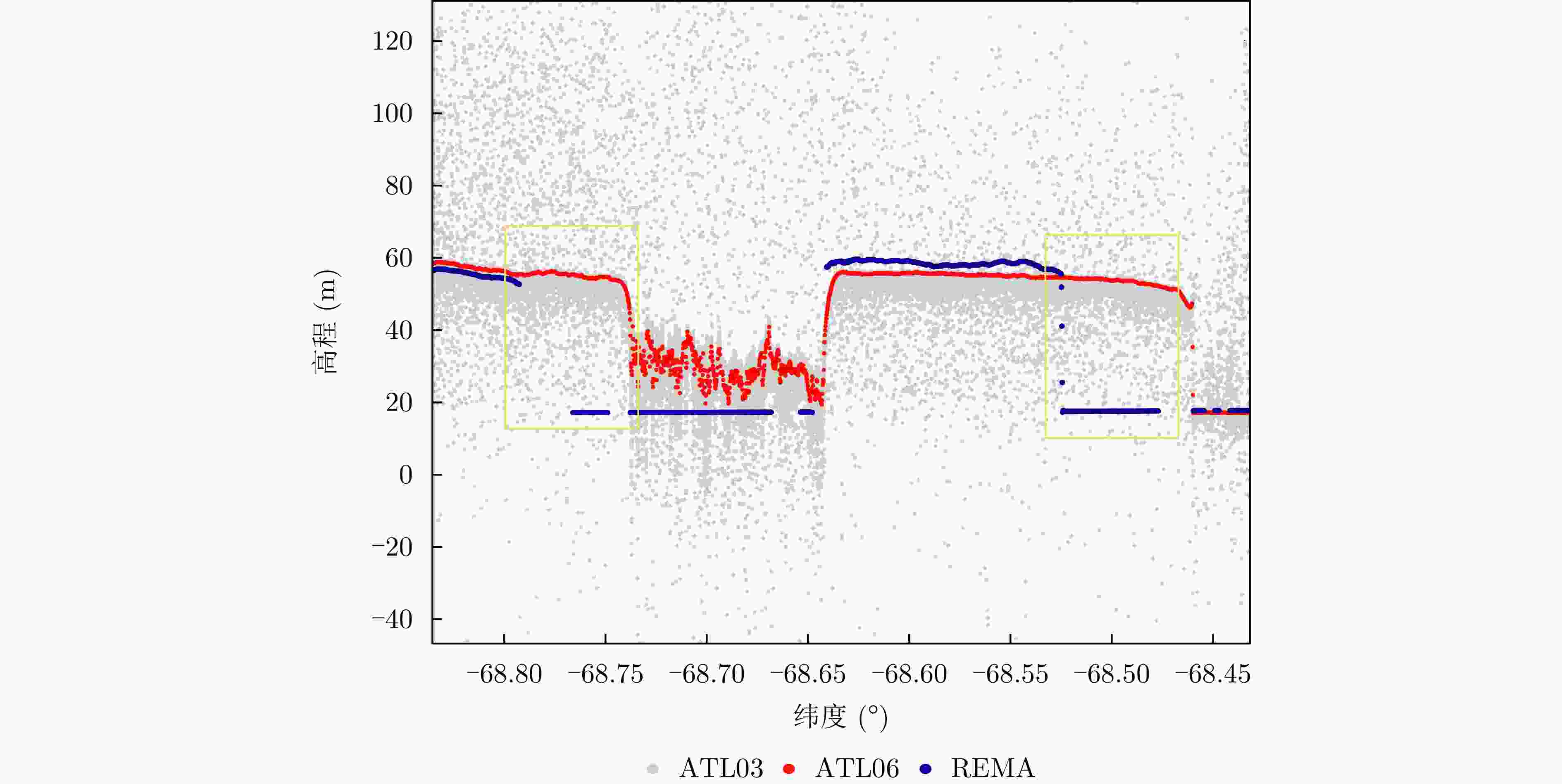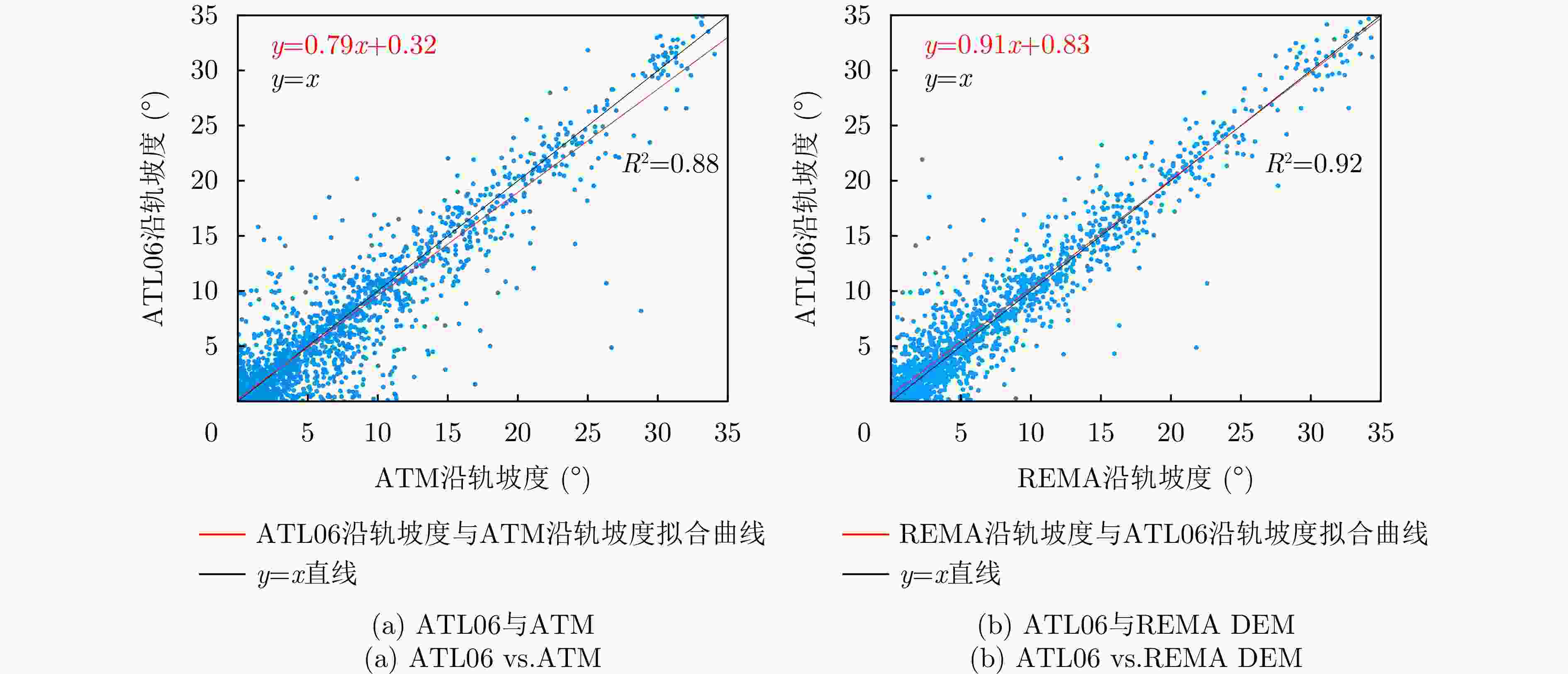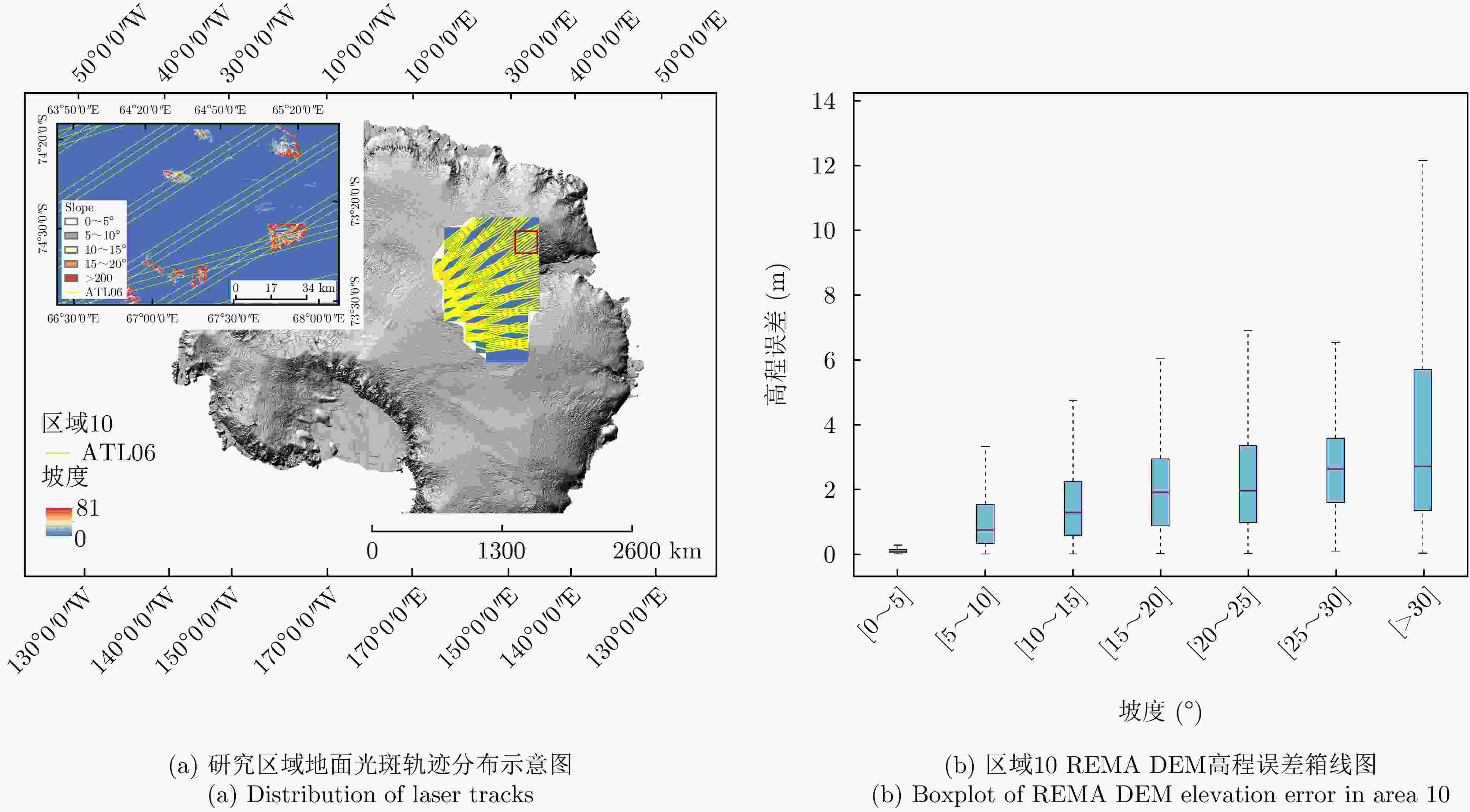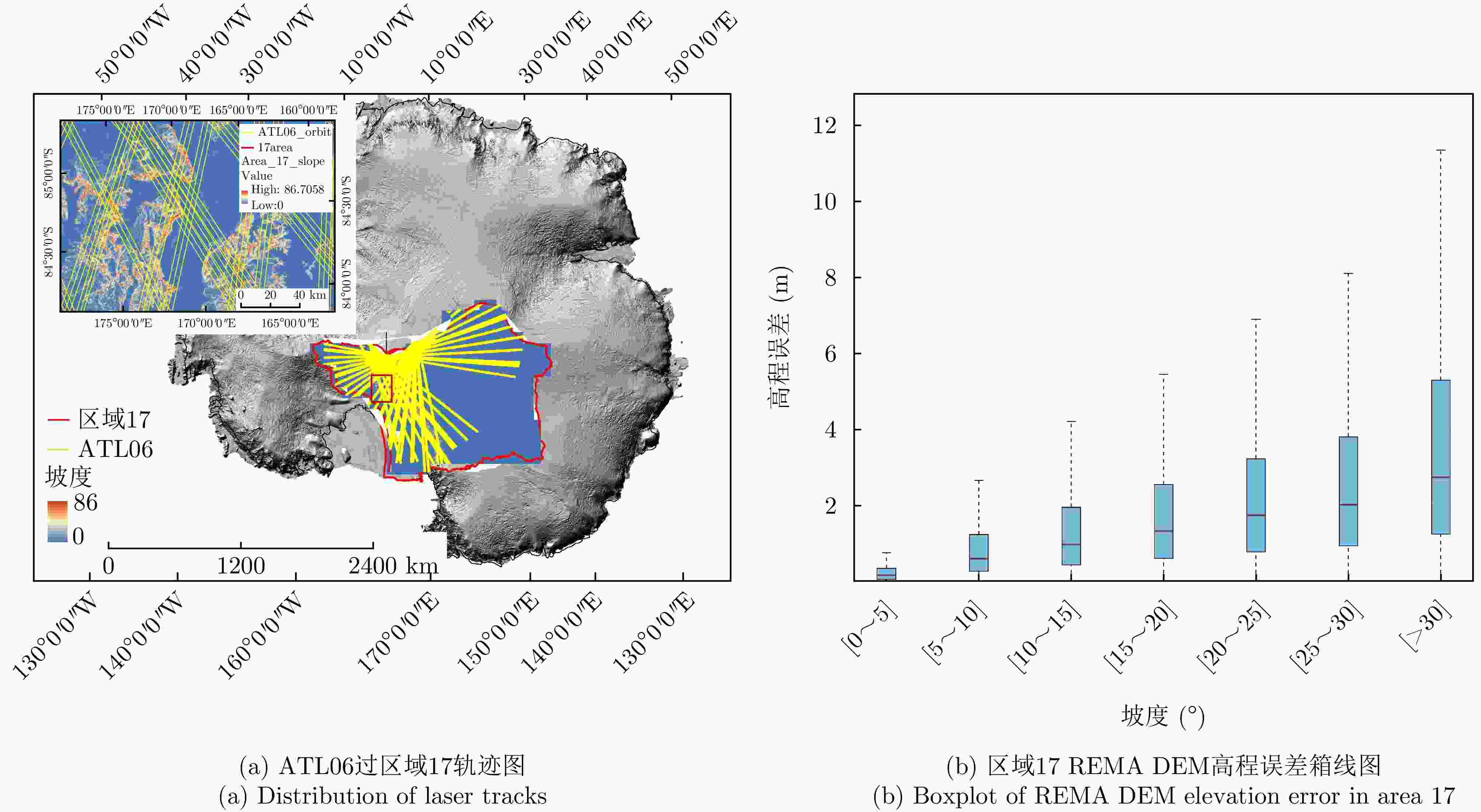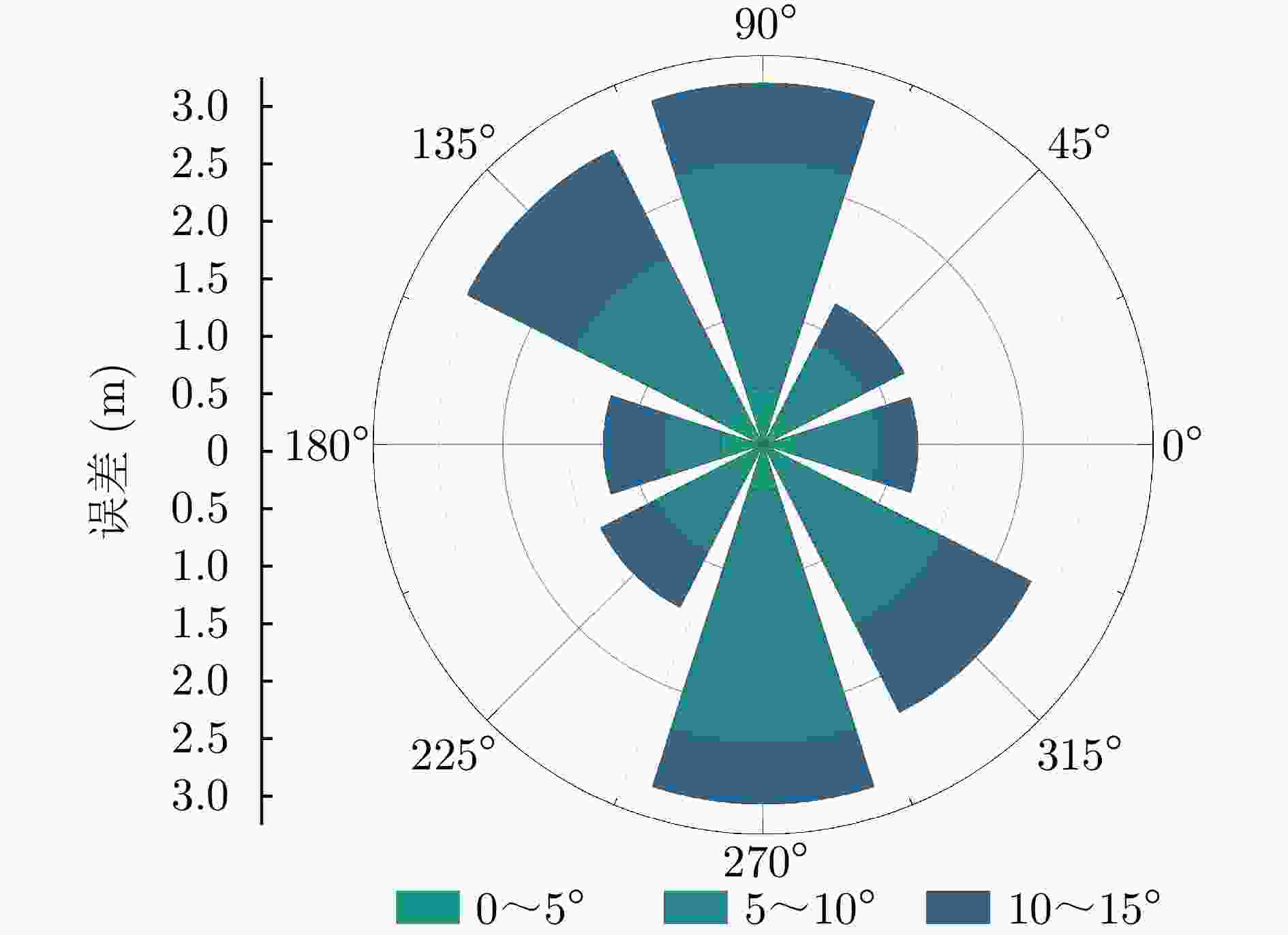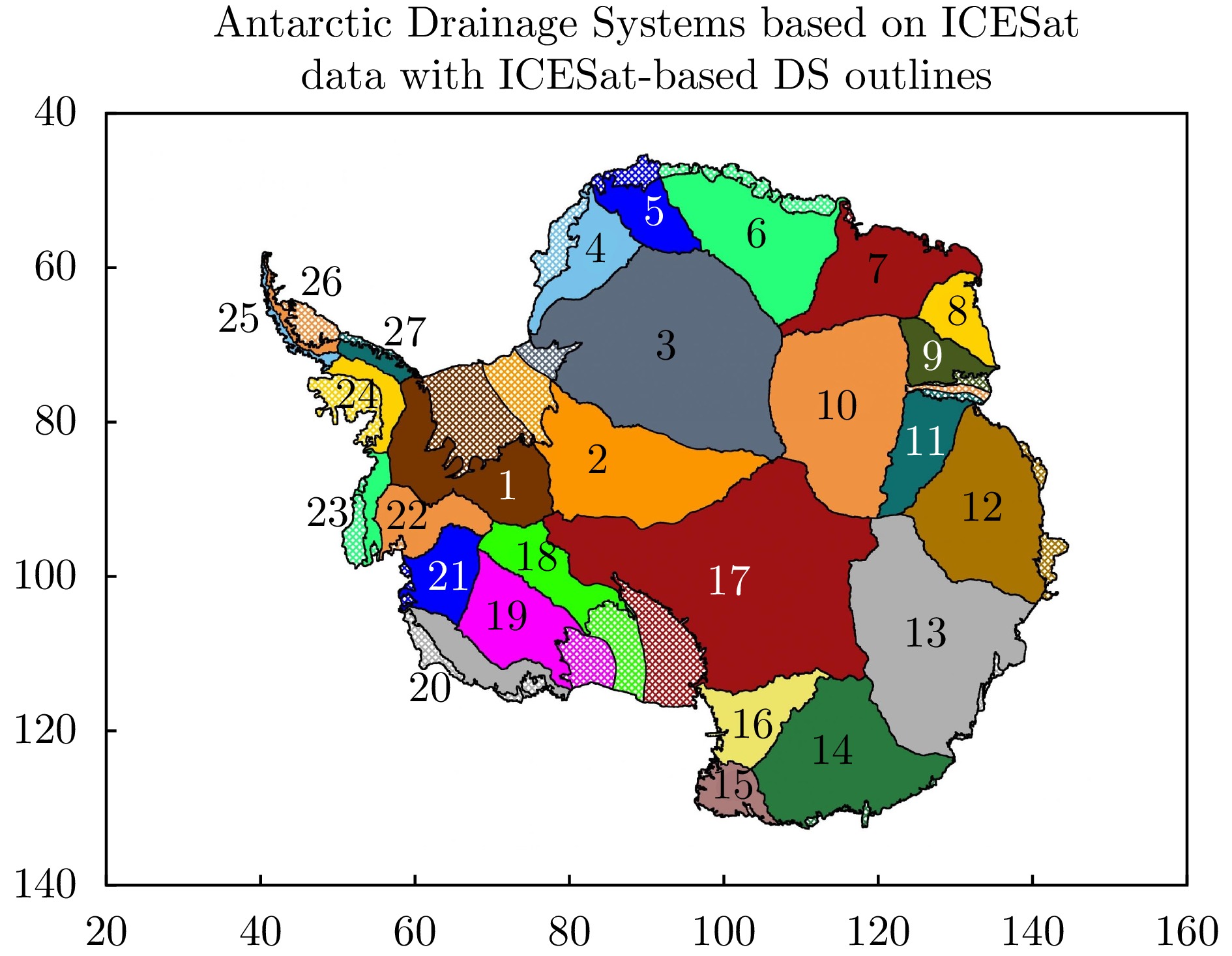Accuracy Assessment of the Antarctic Digital Elevation Model Based on the ICESat-2 Elevation Data
-
摘要: 南极数字高程模型(DEM)能够为南极科考活动提供关键地形数据的支撑,还可用于融水池体积估算等研究。但南极自然环境恶劣,传统地面定标方法实施困难,星载激光雷达能够直接获取高精度的地表高程数据,可以有效解决这一问题。ICESat-2作为新一代激光测高卫星,其激光足印间隔仅为0.7 m,其南极冰盖的高程数据产品精度可达厘米级。并且该南极冰盖的高程数据产品与南极洲参考高程模型REMA DEM生成的源数据具有较好的时间匹配度。该文首先利用2015年IceBridge计划的IDHDT4数据产品验证了ICESat-2陆冰高数据ATL06的高程精度。在此基础上,利用验证后的ATL06数据系统评估了REMA DEM 32 m分辨率产品的高程精度。研究表明REMA DEM在坡度小于5°的平坦地形上精度可达亚米级,接近激光测高精度,在坡度达到30°时高程误差的RMSE不超过3.5 m。此外,论文进一步分析了地面光斑轨迹方向与DEM坡向间的夹角和季节对REMA DEM高程精度评估的影响。该文精度验证的结果能够为后续利用该数据产品在平坦地区进行冰面湖水深反演等工作提供理论依据。
-
关键词:
- 星载光子计数激光雷达 /
- 数字高程模型 /
- 高程精度评估 /
- 激光测高 /
- 南极DEM
Abstract: Antarctic Digital Elevation Models (DEMs) provide critical topographic support for polar scientific expeditions and enable the estimation of melt pond volumes. However, conventional ground calibration methods face implementation challenges in extreme Antarctic environments. Spaceborne Light Detection And Ranging (LiDAR) effectively addresses this limitation by directly acquiring high-precision surface elevation data. ICESat-2, a next-generation laser altimetry satellite, features an exceptionally small laser footprint spacing of merely 0.7 m. The elevation data products of ICESat-2 over the Antarctic ice sheet achieve centimeter-level accuracy using the Reference Elevation Model of Antarctica (REMA) source data. This study first validated the elevation accuracy of the ICESat-2 ATL06 (Advanced Topographic Laser Altimeter System Land Ice Height) data products using the IDHDT4 (IceBridge HiCARS Depth Digitizer Time Series, Version 4) data from the 2015 Operation IceBridge campaign of NASA in the McMurdo Dry Valleys region and mitigated disturbances from cloud cover, snowfall, and other factors through a quality control algorithm. Building upon this validation, this study systematically assessed the elevation accuracy of the 32 m resolution REMA DEM across selected low-ablation regions of the Antarctic ice sheet, delineated according to Antarctic drainage basin boundaries, using the ATL06 data as a reference. Results showed that REMA DEM achieves submeter accuracy (comparable to laser altimetry precision) in flat terrains with slopes below 5°, with a Root-Mean-Square Error (RMSE) of 0.72 m and a Mean Absolute Error (MAE) of 0.31 m. For moderate slopes of 5°–10°, the RMSE and MAE increased to 1.91 and 1.06 m, respectively; meanwhile, slopes of 10°–15° yielded values of 2.30 m (RMSE) and 1.57 m (MAE). Even at steeper slopes of 30°, the elevation error remained controlled, with the RMSE not exceeding 3.5 m. This study further quantified the impact of ground track orientation relative to slope aspect and seasonal variations. Track-aspect angles perpendicular to slopes intensify errors (e.g., RMSE increases by 170% at a slope of 15°), whereas seasonal differences in elevation errors remain minimal (i.e., <5%). The validation framework demonstrates the robustness of REMA DEM across diverse Antarctic terrains, providing a theoretical foundation for different applications, such as lake ice surface bathymetry inversion -
表 1 ATL06数据质量控制前后对比
Table 1. Comparative analysis of the residual error after quality control
沿轨坡度(°) RMSE (m) MAE (m) 激光测高
理论不确
定度(1σ) (m)原始
数据质量控制后 原始
数据质量控制后 0~5 0.94 0.63 0.72 0.43 0.45 @5° 5~10 1.23 0.79 0.87 0.51 0.88 @10° 10~15 1.68 1.14 1.16 0.74 1.33 @15° 15~20 1.95 1.46 1.51 0.99 1.80 @20° 20~25 2.53 1.58 1.84 1.17 2.30 @25° 25~30 2.94 1.84 1.97 1.30 2.85 @30° >30 4.24 3.81 3.21 2.28 4.13 @35° 表 2 不同年份ATL06数据实际误差与理论误差对比统计
Table 2. Comparative statistics between actual errors and theoretical errors of ATL06 data across different years
沿轨坡度(°) RMSE (m) 激光测高
理论不确定度(1σ) (m)2019年 2020年 2021年 0~5 0.63 0.68 0.57 0.45 @5° 5~10 0.79 0.82 0.69 0.88 @10° 10~15 1.14 1.23 1.14 1.33 @15° 15~20 1.46 1.37 1.35 1.80 @20° 20~25 1.58 1.66 1.57 2.30 @25° 25~30 1.84 1.97 1.81 2.85 @30° >30 3.81 4.13 3.82 4.13 @35° 表 3 区域17与区域10误差统计
Table 3. Error analysis of REMA DEM in area 17 and area 10
沿轨坡度(°) RMSE (m) MAE (m) 90分位点(m) ATL06残差
RMSE (m)区域17 区域10 区域17 区域10 区域17 区域10 0~5 0.72 0.14 0.31 0.09 0.64 0.20 0.63 5~10 1.91 1.67 1.06 1.02 2.45 2.73 0.79 10~15 2.39 2.23 1.58 1.35 3.31 3.51 1.14 15~20 2.78 2.58 1.82 1.73 4.00 4.21 1.46 20~25 3.14 2.90 2.11 2.02 4.54 4.46 1.58 25~30 3.33 3.27 2.30 2.23 4.92 4.99 1.84 >30 4.37 4.26 3.03 2.95 6.69 6.55 3.81 表 4 REMA DEM在区域17夏季和冬季精度检验结果
Table 4. Elevation accuracy assessment of Area 17 in summer and winter
季节 沿轨坡度(°) RMSE (m) MAE (m) 90分位点(m) 数据点 夏季 0~5 0.80 0.31 0.65 3 470 743 5~10 1.23 1.08 2.51 1 665 340 10~15 2.47 1.52 3.37 656 800 15~20 2.92 1.91 4.09 340 750 20~25 3.24 2.22 4.63 210 970 25~30 3.49 2.44 4.95 14 099 >30 4.67 3.25 7.07 13 490 冬季 0~5 0.79 0.30 0.64 3 929 370 5~10 1.15 1.06 2.45 1 954 520 10~15 2.43 1.47 3.31 787 090 15~20 2.81 1.83 4.00 427 110 20~25 3.17 2.12 4.54 274 790 25~30 3.40 2.32 4.94 18 646 >30 4.48 3.05 6.71 18 845 -
[1] 刘卓, 李佳, 张翔, 等. 利用TanDEM-X影像和ICESat-2高程数据获取南极高精度数字高程模型[J]. 测绘通报, 2022(4): 72–76. doi: 10.13474/j.cnki.11-2246.2022.0113.LIU Zhuo, LI Jia, ZHANG Xiang, et al. Obtaining high-precision digital elevation model in Antarctica based on TanDEM-X images and ICESat-2 data[J]. Bulletin of Surveying and Mapping, 2022(4): 72–76. doi: 10.13474/j.cnki.11-2246.2022.0113. [2] CUI Xiangbin, JEOFRY H, GREENBAUM J S, et al. Bed topography of princess elizabeth land in east Antarctica[J]. Earth System Science Data, 2020, 12(4): 2765–2774. doi: 10.5194/essd-12-2765-2020. [3] MORALES A, FIERREZ J, SÁNCHEZ J S, et al. Pattern Recognition and Image Analysis: 9th Iberian Conference, IbPRIA 2019, Madrid, Spain, July 1–4, 2019, Proceedings, Part I[M]. Cham: Springer, 2019. doi: 10.1007/978-3-030-31332-6. [4] HUANG Lanqing and HAJNSEK I. A study of sea ice topography in the Weddell and Ross seas using dual-polarimetric TanDEM-X imagery[J]. The Cryosphere, 2024, 18(7): 3117–3140. doi: 10.5194/tc-18-3117-2024. [5] FAN Yubin, KE Changqing, and SHEN Xiaoyi. A new Greenland digital elevation model derived from ICESat-2 during 2018–2019[J]. Earth System Science Data, 2022, 14(2): 781–794. doi: 10.5194/essd-14-781-2022. [6] SHEN Xiaoyi, KE Changqing, FAN Yubin, et al. A new digital elevation model (DEM) dataset of the entire Antarctic continent derived from ICESat-2[J]. Earth System Science Data, 2022, 14(7): 3075–3089. doi: 10.5194/essd-14-3075-2022. [7] DONG Yuting, ZHAO Ji, LI Caiyong, et al. Gapless-REMA100: A gapless 100-m reference elevation model of Antarctica with voids filled by multi-source DEMs[J]. ISPRS Journal of Photogrammetry and Remote Sensing, 2022, 186: 70–82. doi: 10.1016/j.isprsjprs.2022.01.024. [8] ZWALLY H J, MAJOR J A, BRENNER A C, et al. Ice measurements by geosat radar altimetry[J]. Johns Hopkins APL Technical Digest, 1987, 2: 251–254. [9] LIU Hongxing, JEZEK K C, and LI Biyan. Development of an Antarctic digital elevation model by integrating cartographic and remotely sensed data: A geographic information system based approach[J]. Journal of Geophysical Research: Solid Earth, 1999, 104(B10): 23199–23213. doi: 10.1029/1999JB900224. [10] DIMARZIO J P. GLAS/ICESat 500 m laser altimetry digital elevation model of Antarctica, version 1[R]. NSIDC-0304, 2007. doi: 10.5067/K2IMI0L24BRJ. [11] YU J, LIU Hongxing, and WANG Lei, et al. Blue ice areas and their topographical properties in the Lambert glacier, Amery Iceshelf system using Landsat ETM+, ICESat laser altimetry and ASTER GDEM data[J]. Antarctic Science, 2012, 24(1): 95–110. doi: 10.1017/S0954102011000630. [12] YANG Kang, SMITH L C, FETTWEIS X, et al. Surface meltwater runoff on the Greenland ice sheet estimated from remotely sensed supraglacial lake infilling rate[J]. Remote Sensing of Environment, 2019, 234: 111459. doi: 10.1016/j.rse.2019.111459. [13] LV Jinhao, LI Shaoyu, WANG Xiaoming, et al. Long-term satellite-derived bathymetry of Arctic supraglacial lake from ICESat-2 and Sentinel-2[J]. The International Archives of the Photogrammetry, Remote Sensing and Spatial Information Sciences, 2024, XLVIII-1-2024: 469–477. doi: 10.5194/isprs-archives-XLVIII-1-2024-469-2024. [14] LEESON A A, SHEPHERD A, PALMER S, et al. Simulating the growth of supraglacial lakes at the western margin of the Greenland ice sheet[J]. The Cryosphere, 2012, 6(5): 1077–1086. doi: 10.5194/tc-6-1077-2012. [15] HOWAT I M, PORTER C, SMITH B E, et al. The reference elevation model of Antarctica[J]. The Cryosphere, 2019, 13(2): 665–674. doi: 10.5194/tc-13-665-2019. [16] LI Yi, FU Haiqing, ZHU Jianjun, et al. A method for SRTM DEM elevation error correction in forested areas using ICESat-2 data and vegetation classification data[J]. Remote Sensing, 2022, 14(14): 3380. doi: 10.3390/rs14143380. [17] LIU Zhiwei, ZHU Jianjun, FU Haiqiang, et al. Evaluation of the vertical accuracy of open global DEMs over steep terrain regions using ICESat data: A case study over Hunan Province, China[J]. Sensors, 2020, 20(17): 4865. doi: 10.3390/s20174865. [18] CHEN Jun, XIONG Liyang, LI Sijin, et al. Global open-access DEM vertical elevation and along track neighbouring structure evaluations in the Tibetan Plateau using ICESat‐2 ATL03 points[J]. Earth Surface Processes and Landforms, 2025, 50(2): e6062. doi: 10.1002/esp.6062. [19] FOUNTAIN A G, NYLEN T H, MONAGHAN A, et al. Snow in the McMurdo Dry Valleys, Antarctica[J]. International Journal of Climatology, 2010, 30(5): 633–642. doi: 10.1002/joc.1933. [20] SCHENK T, CSATHO B, and NEUMANN T. Assessment of ICESat-2’s horizontal accuracy using precisely surveyed terrains in McMurdo Dry Valleys, Antarctica[J]. IEEE Transactions on Geoscience and Remote Sensing, 2022, 60: 4303811. doi: 10.1109/TGRS.2022.3147722. [21] LI Song, LIAO Jingjuan, and ZHANG Lianchong. Extraction and analysis of elevation changes in Antarctic ice sheet from CryoSat-2 and Sentinel-3 radar altimeters[J]. Journal of Applied Remote Sensing, 2022, 16(3): 034514. doi: 10.1117/1.JRS.16.034514. [22] NILSSON J, GARDNER A S, and PAOLO F S. Elevation change of the Antarctic ice sheet: 1985 to 2020[J]. Earth System Science Data, 2022, 14(8): 3573–3598. doi: 10.5194/essd-14-3573-2022. [23] SMITH B, FRICKER H A, HOLSCHUH N, et al. Land ice height-retrieval algorithm for NASA’s ICESat-2 photon-counting laser altimeter[J]. Remote Sensing of Environment, 2019, 233: 111352. doi: 10.1016/j.rse.2019.111352. [24] KOENIG L, MARTIN S, STUDINGER M, et al. Polar airborne observations fill gap in satellite data[J]. Eos, Transactions American Geophysical Union, 2010, 91(38): 333–334. doi: 10.1029/2010EO380002. [25] BLANKENSHIP D D, KEMPF S D, YOUNG D A, et al. IceBridge Riegl laser altimeter L2 geolocated surface elevation triplets, version 1[R]. ILUTP2, 2012. doi: 10.5067/JV9DENETK13E. [26] LEVINSEN J F, HOWAT I M, and TSCHERNING C C. Improving maps of ice-sheet surface elevation change using combined laser altimeter and stereoscopic elevation model data[J]. Journal of Glaciology, 2013, 59(215): 524–532. doi: 10.3189/2013JoG12J114. [27] WESSEL B, HUBER M, WOHLFART C, et al. Accuracy assessment of the global TanDEM-X digital elevation model with GPS data[J]. ISPRS Journal of Photogrammetry and Remote Sensing, 2018, 139: 171–182. doi: 10.1016/j.isprsjprs.2018.02.017. [28] GARDNER C S. Ranging performance of satellite laser altimeters[J]. IEEE Transactions on Geoscience and Remote Sensing, 1992, 30(5): 1061–1072. doi: 10.1109/36.175341. [29] MARKUS T, NEUMANN T, MARTINO A, et al. The ice, cloud, and land elevation satellite-2 (ICESat-2): Science requirements, concept, and implementation[J]. Remote Sensing of Environment, 2017, 190: 260–273. doi: 10.1016/j.rse.2016.12.029. [30] SHEN X, KE C Q, YU X, et al. Evaluation of ice, cloud, and land elevation satellite-2 (ICESat-2) land ice surface heights using Airborne Topographic Mapper (ATM) data in Antarctica[J]. International Journal of Remote Sensing, 2021, 42(7): 2556–2573. doi: 10.1080/01431161.2020.1856962. [31] VARGA M and BAŠIĆ T. Accuracy validation and comparison of global digital elevation models over Croatia[J]. International Journal of Remote Sensing, 2015, 36(1): 170–189. doi: 10.1080/01431161.2014.994720. [32] AFSHARNIA H, AREFI H, and ABBASI M. Geometric correction of satellite stereo images by DEM matching without ground control points and map projection step: Tested on Cartosat-1 images[J]. Earth Science Informatics, 2022, 15(2): 1183–1199. doi: 10.1007/s12145-022-00799-3. [33] YE Jiang, QIANG Yuxuan, ZHANG Rui, et al. High-precision digital surface model extraction from satellite stereo images fused with ICESat-2 data[J]. Remote Sensing, 2021, 14(1): 142. doi: 10.3390/rs14010142. [34] HABIB M. Evaluation of DEM interpolation techniques for characterizing terrain roughness[J]. CATENA, 2021, 198: 105072. doi: 10.1016/j.catena.2020.105072. [35] 陈昊楠, 许诗枫, 黄艳, 等. ASTER GDEM V2的南极冰川高程误差校正及精度分析[J]. 遥感学报, 2020, 24(8): 1010–1022. doi: 10.11834/jrs.20208361.CHEN Haonan, XU Shifeng, HUANG Yan, et al. Vertical accuracy correction and analysis of ASTER GDEM V2 over Antarctic glacier[J]. Journal of Remote Sensing (Chinese), 2020, 24(8): 1010–1022. doi: 10.11834/jrs.20208361. [36] DALIAKOPOULOS I N and TSANIS I K. A SIFT-based DEM extraction approach using GEOEYE-1 satellite stereo pairs[J]. Sensors, 2019, 19(5): 1123. doi: 10.3390/s19051123. [37] ANAND V, OINAM B, and WIEPRECHT S. Assessment and comparison of DEM generated using cartosat-1 stereo pair data for hydrological applications[J]. Journal of the Indian Society of Remote Sensing, 2023, 51(3): 483–496. doi: 10.1007/s12524-022-01639-z. -



 作者中心
作者中心 专家审稿
专家审稿 责编办公
责编办公 编辑办公
编辑办公
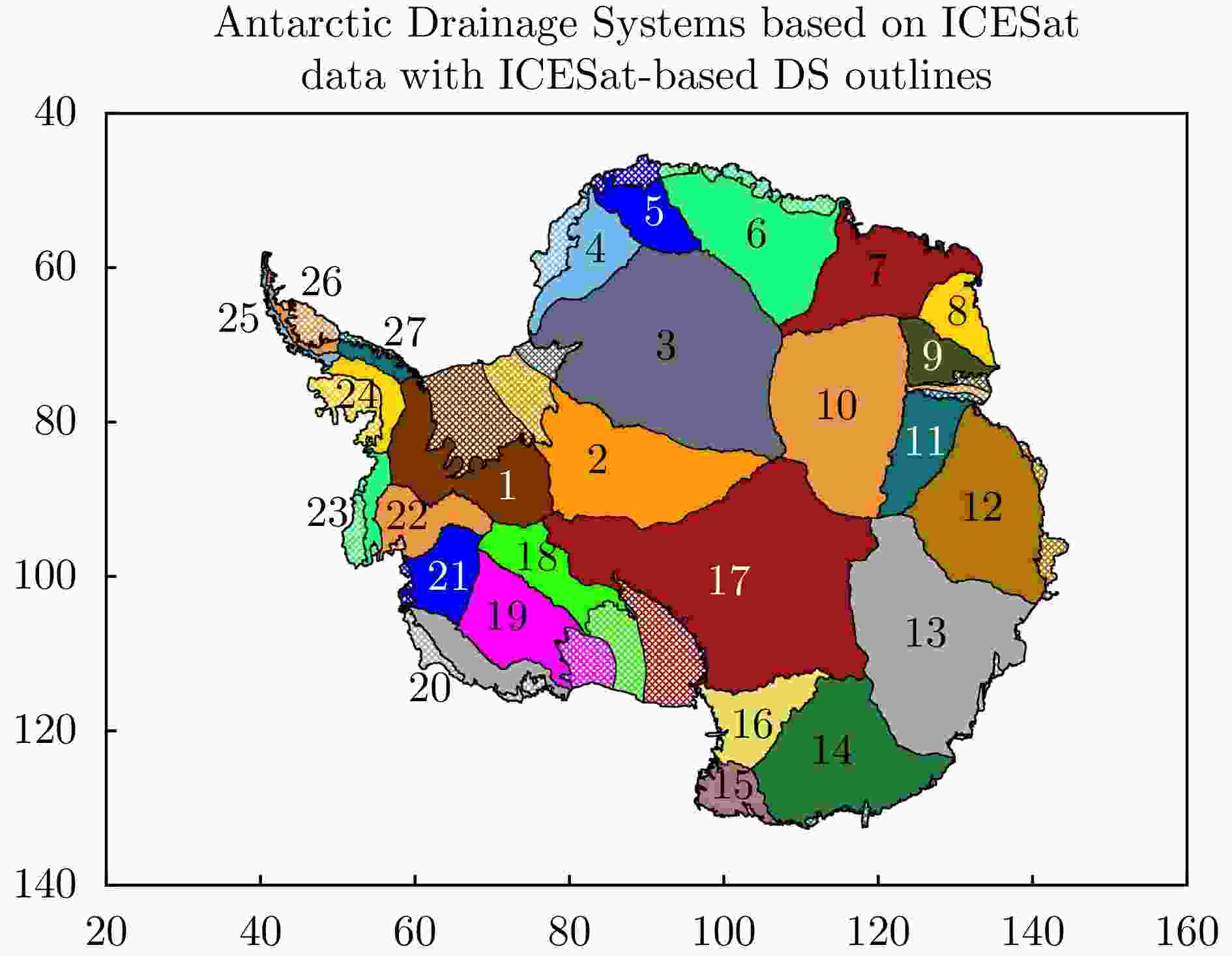
 下载:
下载:
